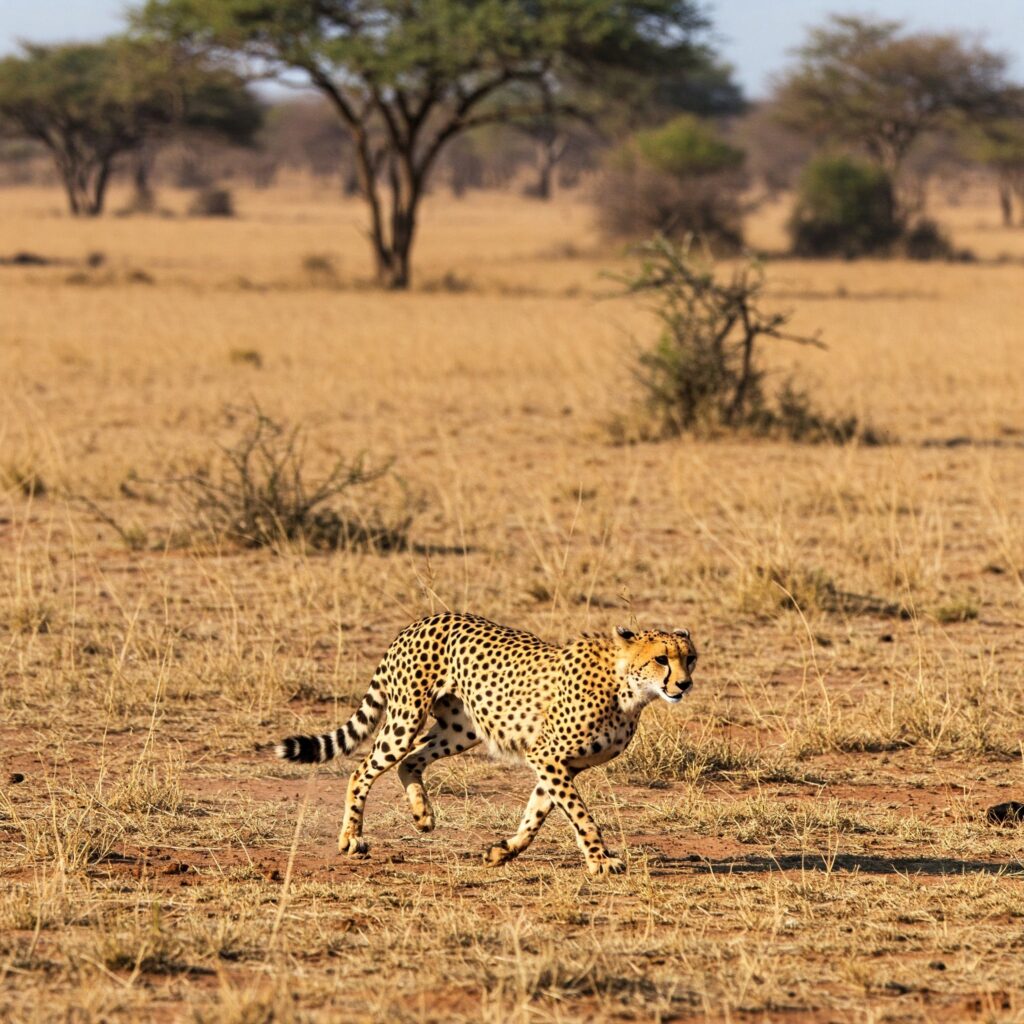Extinct Species in India – India is home to a rich and diverse ecosystem, but it is also home to a number of extinct species. Some of these species are well-known, such as the Indian rhinoceros and the Bengal tiger. However, there are a number of other extinct species that are not as well-known, but are just as fascinating.
In this article, we will explore seven of these unknown extinct species that will blow your mind. We will learn about their unique characteristics, their extinction, and their legacy.

Extinct Species in India
1. The Indian Cheetah (Acinonyx jubatus venaticus)
India’s connection to the fastest land animal on Earth might come as a surprise to many. The Indian cheetah, once found across the subcontinent, became extinct in India by the mid-20th century. It was a distinct subspecies of the cheetah, smaller than its African cousins but equally adept at high-speed chases across the plains. The Indian cheetah’s sudden extinction was caused by overhunting, loss of habitat, and a decline in prey species. It is now considered extinct in the wild, with some debates about the possibility of its reintroduction in India, but the memory of its grace and speed continues to captivate imaginations.
Extinction Date: The Indian cheetah species became extinct in India in the 1950s.
Reasons for Extinction: Overhunting, climate change habitat loss, and a decline in prey species.
Current Status: The species is considered extinct in the wild in India, with a possibility of reintroduction being discussed in recent years.


2. The Javan Tiger (Panthera tigris sondaica)
Though the Javan tiger is more often associated with Indonesia, a subspecies of it once inhabited the forests of India, particularly in the Andaman and Nicobar Islands. This tiger was known for its smaller size and distinct features, and it was adapted to the island’s unique environment. By the 1970s, the Javan tiger had disappeared from the region, with habitat destruction and hunting being the primary causes. The extinction of the Javan tiger remains a tragic loss, and some conservationists even advocate for attempts to reintroduce tigers to the Andaman Islands.
Extinction Date: The Java Tiger Extinct in India in the 1970s.
Reasons for Extinction: Habitat destruction, hunting, climate change and a decline in prey.
Current Status: Extinct in the wild; however, there were occasional sightings reported in the Andaman Islands until the 1970s.


3. The Pink-headed Duck (Rhodonessa caryophyllacea)
A true enigma, the pink-headed duck was once found in the wetlands of northern India, particularly in Assam and Bengal. Described by British ornithologists in the 19th century, this bird’s striking appearance—featuring a vivid pink head—made it a prized subject of study. Unfortunately, due to habitat loss and hunting, the species rapidly declined in the early 20th century. Though it was last sighted in the 1950s, there have been occasional reports of sightings since, keeping hopes alive. However, most experts believe the pink-headed duck is now extinct.
Extinction Date: The last confirmed sighting was in 1950s, though the species is presumed extinct in India by the 20th century.
Reasons for Extinction: Habitat loss (wetlands), hunting, climate change and disturbance from human activity.
Current Status: Likely extinct; despite occasional reports of sightings, no confirmed sightings have occurred in decades.


4. The Indian Woolly Mammoth (Mammuthus indicus)
The Indian Woolly Mammoth, a distant cousin of the iconic mammoth, once roamed the plains and forests of India during the Pleistocene era. Larger than its African counterpart, this mammoth had long, thick fur, perfect for surviving the cold during the ice ages. Fossil evidence suggests that the species went extinct around 10,000 years ago, likely due to climate change and the encroachment of early humans. Some believe that these creatures may have coexisted with early human populations, as ancient cave paintings and artifacts from the era depict massive, elephant-like animals.
Extinction Date: 10,000 years ago (end of the Pleistocene epoch).
Reasons for Extinction: Climate change, overhunting, warming of the Earth, and potential overhunting by early humans.
Current Status: Extinct. Fossils found in regions of India, including Rajasthan and Gujarat.


5. The Indian Pleistocene Rhinoceros (Rhinoceros unicornis)
The Indian Pleistocene rhinoceros, also known as the “Steppe Rhinoceros,” was a large species of rhino that roamed India during the Pleistocene epoch. Unlike the current Indian rhinoceros, this species had a more robust build and thicker fur to survive the cold climates of the Ice Age. Fossil evidence suggests that the species survived until about 20,000 years ago, disappearing likely due to a combination of climate changes and human hunting. The remains of these extinct rhinos have been found in places like the Rajasthan and Gujarat regions.
Extinction Date: Approximately 20,000 years ago (Pleistocene epoch).
Reasons for Extinction: Climate change, human hunting, overhunting and habitat alterations.
Current Status: Extinct; remains found in regions such as Rajasthan and Gujarat.


6. The Sumatran Tiger (Panthera tigris sumatrae)
Although the Sumatran tiger is primarily associated with the island of Sumatra in Indonesia, there was a related subspecies found in the Indian subcontinent, specifically in the eastern part of the country. Known for their dark, thick coats and powerful physique, these tigers were believed to have roamed areas in Bengal and Assam. The pressures of deforestation, poaching, and human-wildlife conflict led to the species’ eventual extinction. The last confirmed sighting of this tiger was in the early 20th century, and their disappearance is a tragic reminder of the fragility of ecosystems.
Extinction Date: Species extinct in India by the early 20th century.
Reasons for Extinction: Deforestation, climate change, poaching, and human-wildlife conflict.
Current Status: Extinct in India; still exists in Sumatra, Indonesia.


7. The Indian Pygmy Hippo (Choeropsis liberiensis)
While most people associate hippos with Africa, India was once home to a smaller species of hippo—the Indian pygmy hippo. This species was significantly smaller than its African relatives and roamed the wetlands and river systems of the Indian subcontinent. Fossils of the pygmy hippo have been found in areas like the Siwalik Hills in northern India, dating back to the Pleistocene era. As the landscape changed and human populations expanded, this unique species of hippo was pushed to extinction.
Extinction Date: Likely around the Pleistocene era, but exact timing is unclear, species extinct in India.
Reasons for Extinction: Climate change, loss of wetlands and river systems, overhunting, and competition with other species.
Current Status: Extinct in India, with fossils found in the Siwalik Hills of northern India.


Statistical Overview
- Extinction Timeline: The majority of these species went extinct during two major periods: the end of the Pleistocene Epoch (around 10,000 years ago) and the mid-20th century (especially the 1950s-1970s).
- Geographical Range: These species were primarily distributed across the Indian subcontinent, with some extending to nearby regions such as the Andaman Islands and parts of Southeast Asia.
- Causes of Extinction: Common factors contributing to extinction include:
- Habitat loss (due to deforestation, urbanization, or climate change).
- Human-induced pressures such as hunting, poaching, and over-exploitation.
- Environmental changes due to climate shifts (particularly relevant for species like the woolly mammoth and the Indian Pleistocene rhinoceros).
Conclusion
The extinction of these species serves as a poignant reminder of the delicate balance between nature and human activity. While some of these creatures may never return, there is still hope for the conservation of India’s remaining wildlife. Preserving the habitats of the species still present, along with learning from the past, is crucial in ensuring that we do not lose more of our planet’s precious biodiversity. India’s lost species, from the cheetah to the pygmy hippo, hold a special place in the history of the subcontinent, and their legacy deserves to be remembered. We should move towards sustainable living and save our nature.
#BleedGreen


The writer believes awareness is the solution for change. Her comprehension in the field of ecology and environmental studies is impactful. With her knowledge, she had written much content for academic websites and well-known publishing platforms. Here, at BleedGreen, she urges us to share her wisdom of words to bring cognizant in the society for our green resources.




